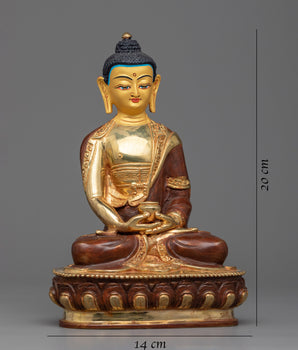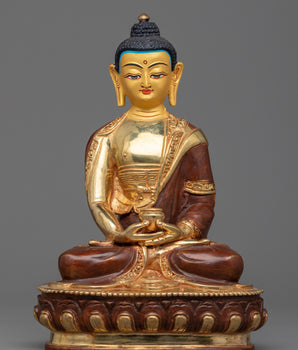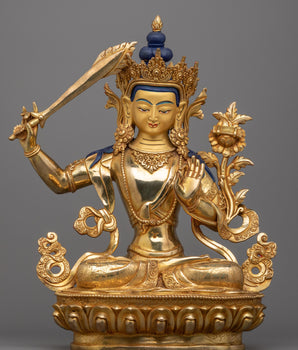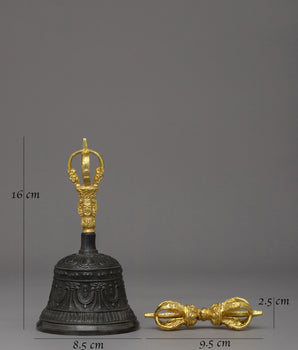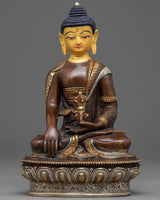
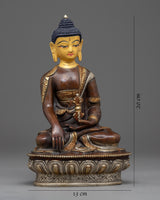


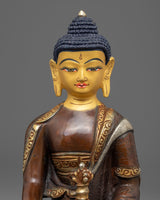


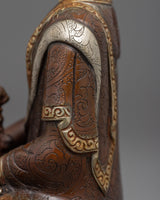


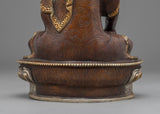
Akshobhya Buddha Altar Statue | Himalayan Traditionally Hand-carved

100% AUTHENTIC

HANDMADE

FREE SHIPPING
Himalayan Traditionally Hand-carved Akshobhya Buddha Altar Statue
------------------------------------------
Size: 7.8"/20cm (Height) x 5"/13cm (Base)
Weight: 1.3 kg
Material: 24K Gold Gilded, Oxidized Copper Body, Acrylic Paintings
------------------------------------------
About Our Statue:
Nepalese artisans meticulously made the Akshobhya Buddha Altar Statue. Due to its oxidized copper body, the statue took our artisans months to complete. The face and some parts of the statue's robes were also coated in 24k genuine gold. His left hand, which is in a thoughtful position on his lap with the palm facing up, is holding a vajra scepter vertically. The vajra scepter of Akshobhya represents his status as a member of the Vajra Family and his role as the symbolic Buddha of Tantric Buddhism. His right hand barely rests on the earth, representing his acquired enlightenment. This figure can be used in various Buddhist traditions and meditation activities.
Within the Karma Kagyu lineage, the Akshobhya Buddha Pureland is commonly practiced. Akshobhya's vajra scepter symbolizes that he is the symbolic Buddha of Tantric Buddhism and a member of the Vajra Family. Askhobhya, the fifth Dyani Buddha, a bodhisattva who lives in the eastern direction, swore not to become furious until he attained enlightenment. Here is a selection of the teachings, photographs, illustrations, and quotations we have gathered to help you learn more about this Buddha figure.
Introduction to Mitrupa:
Mitrupa, also known as Mitrugpa, is a deity in Tibetan Buddhism identified with immovable wisdom, clarity, and spiritual protection. He is often equated with Akshobhya Buddha, one of the Five Dhyani Buddhas, who symbolizes steadfastness, serenity, and the transformation of anger into wisdom that is mirror-like in nature. Mitrupa represents the quality of being immovable in the face of obstacles and distractions, embodying spiritual resolve and unwavering clarity on the path to enlightenment. As such, he serves as a protector and inspiration for practitioners seeking stability and wisdom in their meditation and spiritual practice.
How do you take care of your statues?
• Place them at room temperature, avoiding direct sunlight.
• Make sure that the area where your statue is placed is entirely free of moisture and dust.
• Place it at the highest place on your altar after being consecrated by the Lama/monks. The best practice is to keep them covered inside a glass cabinet.
• Do not use your bare hands or any objects with a rough surface to wipe the face.
• Directly touching objects with the bare hand can smudge the face, leaving scratches.
















